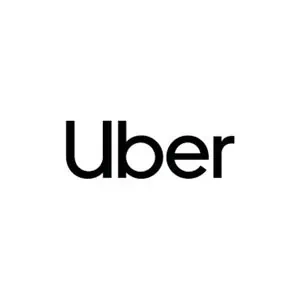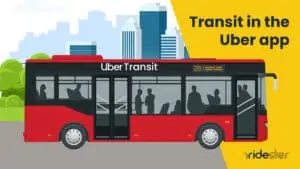Key Takeaways
- Uber offers a convenient, app-based booking process with immediate driver details.
- Uber’s pricing is dynamic and transparent, often resulting in lower costs than taxis.
- Uber typically provides shorter wait times and is more widely available.
- Uber vehicles tend to be of higher quality and comfort, with additional amenities.
| Factor | Uber | Taxi |
|---|---|---|
| Booking Process | Easy app-based booking with immediate driver and car details. | Varies by city; often requires phone booking or street hail. |
| User Experience | Intuitive app with easy navigation. | Often lacks an app or online option, less user-friendly. |
| Pricing Structure | Dynamic pricing based on multiple factors; transparent fares. | Fixed fares based on time and distance; less predictable. |
| Availability & Wait Times | Widely available in urban, suburban, and rural areas; short waits. | Availability varies; often longer wait times. |
| Ride Experience & Comfort | Generally higher vehicle quality and amenities. | Vehicle quality varies; fewer amenities. |
| Safety & Security | Advanced safety features in the app; ongoing driver screening. | Basic safety measures; less frequent driver screening. |
| Customer Service | Efficient online support; user rating system. | More cumbersome complaint process; less immediate support. |
| Environmental Impact | Moving towards all-electric, zero-emission operation by 2040. | Also adopting environmentally friendly solutions. |
| Legal & Regulatory | Faces stricter regulations, leading to enhanced safety. | Traditional regulations; varies by location. |
| Personal Considerations | Better for convenience, spacious vehicle needs, pricing transparency. | Preference for traditional methods or specific situations. |
Brett’s Take: Thoughts From an Expert
Uber is best for tech-savvy users who value convenience and upfront pricing.
It’s perfect for quick, app-based bookings, especially in areas where taxis are scarce.
With transparent costs and higher vehicle quality, Uber suits those who prioritize comfort and safety, like during late-night rides or in unfamiliar places.
Its commitment to environmental sustainability also appeals to eco-conscious riders.
Taxis are ideal for traditional, no-fuss travel, especially in urban areas where they’re easily hailed.
They work well for those uncomfortable with technology or without access to smartphone apps.
Taxis avoid surge pricing, offering more predictable fares during peak hours. They’re a reliable choice for spontaneous trips where immediate availability is key.
- 1. Ease of Use and Booking Process
- 2. Pricing Structure and Transparency
- 3. Availability and Wait Times
- 4. Ride Experience and Comfort
- 5. Safety and Security Measures
- 5. Customer Service and Support
- 7. Environmental Impact
- 8. Legal and Regulatory Aspects
- 9. Personal Preferences and Considerations
- 10. Background on Uber and Taxis
- Frequently Asked Questions
- Wrapping Up
1. Ease of Use and Booking Process
Now that you have a better idea of the background of Uber and taxicabs, let’s kick off our comparison! We’ll start with the differences in booking and usability.
Booking Process
Booking an Uber ride is as easy as a few taps on your smartphone’s screen.
Once you download the app, you need to enter your pickup and dropoff locations. If you’ve already saved some of your frequent addresses, the booking becomes much easier and faster.
Next, you’ll see a few ride options, each type with a different estimation of the trip’s cost. The rate depends on the distance, the car type, and the surge factor. We’ll discuss this in detail in the upcoming section.
Once you tap your preferred ride/price, the app starts working its magic to find a driver nearby. This usually takes a few seconds.
Then, the driver’s name and car details pop up on the screen along with an estimated arrival time.
With traditional taxis, booking a ride isn’t as smooth. The process differs depending on the city you’re booking in.
Unless you go out and signal to a cab on the street, most cities support reservations by phone, where you call the taxi company and provide details about your location and destination.
Some cities also offer booking online via a website, whereas few cities support booking via an app.
User Experience
As a technology company, Uber developed their app with ease of use in mind. It’s intuitive with straightforward navigation thanks to simple buttons and clear language.
This makes for a great user experience when booking an Uber.
Taxis operate differently; booking methods are basic and they don’t feature an app or online option in many cities.
The only reliable booking method is by phone, which is uncomfortable and time-consuming for a lot of people.
Which is Easier to Use?
Uber takes this one, hand down.
2. Pricing Structure and Transparency
This section compares the cost of using Uber vs a taxi.
Pricing Modules
Uber calculates the prices of its trips according to multiple factors including your location, distance to travel, and vehicle type.
UberX is the standard ride type with budget-friendly fares, while UberX Saver is its more affordable version. UberX Share allows you to split the cost with one other passenger per trip.
The fare is higher when we get to the larger and more luxurious cars. UberXL, Uber Black, Uber Comfort, and Uber Black SUV are the more expensive service classes.
Each ride type has a pricing structure consisting of a base fare plus a fare per mile and minute. There’s also a minimum fare to ensure fair compensation.
Uber also uses a surge pricing module that triggers when demand is higher. It results in higher fares and can happen during rush hour or request spikes due to holidays or natural disasters.
As for payment methods, Uber supports credit cards and PayPal via the app. Despite the misconception that Uber doesn’t take cash, it does accept it.
Taxi fares are a combination of factors including the cab company, the time of the, and the destination.
There’s also a base fare, a fare per mile, and a traffic waiting time fee. You may pay extra during rush hour or for a service like carrying luggage.
Transparency/Predictability
Fare transparency is better with Uber than with taxis. Uber offers a more detailed explanation of what you’re paying and why, while taxis are often ambiguous.
Predicting the total fare is also easier with Uber. While the app doesn’t provide a precise end price, its estimation of the cost range remains solid unless something unforeseen happens.
Taxis don’t come close to such predictability. Unless you’re pre-paying, there’s a good chance you’ll end up with a different price than you expect.
Which is Cheaper to Take?
Uber is overall cheaper than a taxi in most US cities. This is especially true during non-peak hours and longer trips. For shorter trips and congested areas, the cost can be comparable, leaning slightly in favor of Uber.
3. Availability and Wait Times
How long do you need to wait for an Uber vs a taxi? Which one is easier to find?
Location and Time Availability
Uber has a massive ride network throughout the world as well as in the United States. The app is live and active in all 50 states, servicing more than 260 cities and regions.
This means you can find an Uber pretty much anywhere in the country. Some areas, however, are easier and quicker to find a ride in than others. The order goes urban, suburban, then rural.
That’s because the demand for a ride is less the further you move from the city. But when compared to taxis, Uber still does better in lower-demand areas. Uber at least offers the possibility where taxis are no hope.
It’s also easier to get a hold of an Uber at unconventional times like late at night after a party or early morning travels. Uber is also easier to catch during peak hours.
Wait Times and Reliability
Wait times depend on the location you’re at and the time of day. Still, it’s rare for passengers to wait longer than a few minutes for an Uber.
Uber is also reliable. You know your ride is coming. Even if your driver cancels, the app finds you a replacement on the spot.
Taxis, however, are often late. Many customers complain about delayed pickups, which is one of the aspects that Uber uses for their marketing.
Also, if your cab doesn’t show or cancels, finding another one can take hours.
Which Has a Lower Wait Time?
Uber offers shorter wait times and better reliability.
4. Ride Experience and Comfort
Are you more likely to enjoy a taxi ride or an Uber?
Driver Behavior
We can’t predict people’s behavior for certain. Since drivers are people, they decide the way they act regardless of the company they’re working for.
That said, most Uber drivers are friendly, helpful, and professional. Some do act out of order or are too chatty, but this isn’t a reflection of all Uber drivers.
We can say the same for taxi drivers. Some are professional while others are rude. Although the latter seems to be more common in yellow taxis than in Uber.
Vehicle Quality
Uber drivers take better care of their vehicles because they’re personal properties at the end of the day. They offer rides to other people, but they still use the same cars to get around themselves.
Taxi drivers don’t care for the state of the vehicles as much, especially their cleanliness.
Uber also has dedicated ride classes that allow you access to luxurious transportation. This is never the case with taxis.
Extra Amenities
Uber rides often find cars with phone chargers, water bottles, candy, and music pairing options. Taxis fall short in this aspect.
Which is More Comfortable?
Uber comes on top with its nicer vehicles and more readily available amenities.
5. Safety and Security Measures
Which service offers more peace of mind?
Policies
Safety concerns are nothing new whether we’re talking about Uber or yellow taxis. Reports of sexual harassment surrounded both services, but Uber seems to be handling things better.
While taxis stopped at background checks before starting work, Uber decided to take it further. The tech company runs background checks every year, even in locations where it isn’t a legal obligation.
Uber also invested in new offense-identifying technology to enhance their driver screening process.
Features
The Uber app offers various safety features such as Trusted Contacts, Real-Time ID Checks, and a Safety Center. There’s also Emergency Assistance and a Safety Toolkit.
Taxis have none of these features.
Which is Safer to Use?
Uber is presenting actionable efforts to boost safety, so we have to give it this one.
5. Customer Service and Support
Uber offers 24/7 customer support through the app and website. Customer service agents are always online to help with any issue you’re having.
Uber also has a star rating system for riders and drivers. Both parties can rate one another, allowing other riders and drivers to avoid problematic encounters with low-rated users.
Riders can also leave comments on drivers’ profiles to let others know of their experience.
Submitting and resolving most complaints with Uber takes minutes. The same goes for lost and found items.
But with taxis, you’ll have to jump through hoops. There’s the hassle of getting the driver’s four-character medallion number and filing a complaint online. There could also be a court hearing if the driver pleads not guilty.
Which Offers Better Support?
Uber, by far.
7. Environmental Impact
Both Uber and taxis have negative environmental effects due to the emissions from millions of vehicles.
Uber, however, is making an effort to fix the situation by sifting to an all-electric, zero-emission operation for all its vehicles. The company’s timeline projects competition for this mission by 2040.
Taxi companies are moving in the same direction, although not on a scale as large as Uber.
Which is Better For the Environment?
This one is a tie as both services are working to adopt environmentally friendly solutions.
8. Legal and Regulatory Aspects
Governmental organizations have imposed stricter safety and compliance regulations on Uber. This translates into a more secure user experience.
Uber is also looking at more cities enforcing minimum wage laws for gig drivers. This follows the enactment of such rules in New York, California, and more.
Fair pay means happier drivers, and as a consequence, a better user experience.
9. Personal Preferences and Considerations
Some situations can affect your Uber vs taxi decision, be it for personal preference or special considerations.
If you prefer the convenience of knowing who is giving you a ride and how much you’ll pay, Uber is the obvious choice.
The same goes if you don’t appreciate waiting outside and would like to leave the comfort of the indoors only when your ride is here.
If you need a more spacious vehicle for health reasons, Uber is also the way to go.
10. Background on Uber and Taxis
Let’s start with a breakdown of the history and evolution of Uber’s service vs conventional taxi cabs.
A Brief History of Uber
The Uber umbrella nowadays includes ride-sharing services, freight transport, and food delivery. But it all started in 2009 as a rideshare company when Garret Camp and Travis Kalanick co-founded the mobile app.
The service’s official launch was in San Francisco (where the headquarters is) in 2011. It was a massive hit that continued to gain popularity, operating in over 70 countries and 10,000 cities around the globe.
Now a multi-billion dollar company, Uber’s rideshare service has a variety of car/ride types that differ in price, passenger capacity, and luxury level.
A few examples are UberX, UberX Share, UberXL, Uber Green, Uber Comfort, Uber Black, and Uber’s taxi offering.
A Brief History of Taxis
The modern form of taxicabs goes back to the 19th century when Walter Bersey introduced his fleet of battery-powered vehicles to London’s streets.
That was in 1897 – the same year New York City saw its first operation of hansom cabs running on electricity.
The company responsible became the Electric Vehicle Company in 1898 following financial reforms. Soon enough, cab vehicles started using taximeters, and in 1898, taxis started running on gas.
Taxis continued their spread throughout the 20th century and served customers more efficiently. The 1940s was when they started using two-way radios, while computerized dispatching started in the 1980s.
Frequently Asked Questions
Here are a couple of common questions you may be wondering about Uber vs taxi:
Is Uber Better Than a Cab?
In terms of convenience, cost, availability, ease of booking, and customer support, Uber is the better option.
Is an Uber Cheaper Than a Taxi?
Uber is generally the cheaper option with better transparency and predictability.
Wrapping Up
Uber offers a more convenient booking process with better location and time availability. The pricing structure is more transparent and the vehicles are often more comfortable.
Safety measures and customer support are also more reliable with Uber, making the popular rideshare app a better option for most passengers than a cab.
That said, you’re free to compare the pros and cons of both services. Your preferences and personal needs can overrule our verdict.






